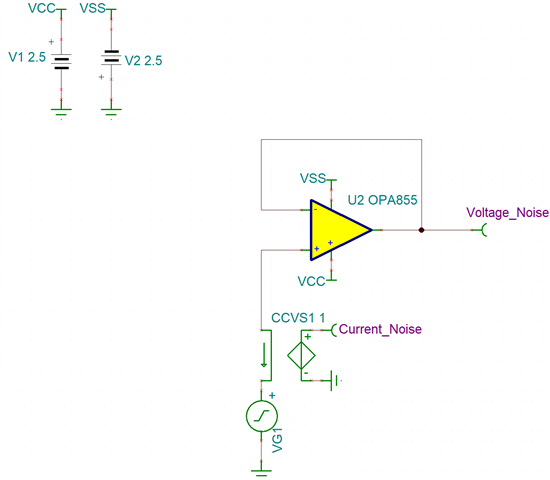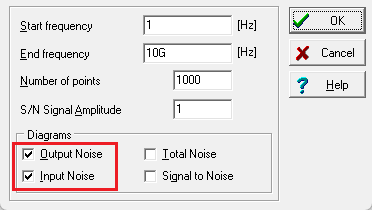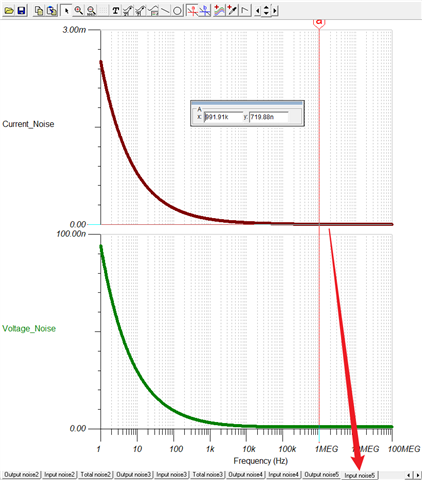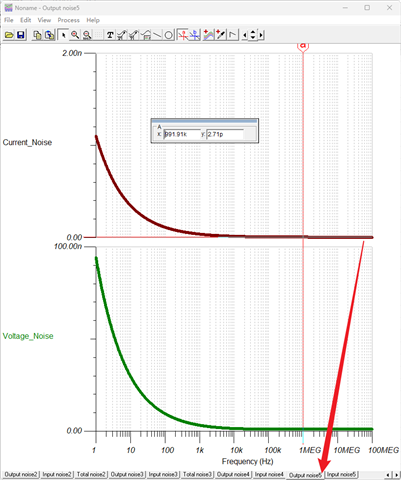Other Parts Discussed in Thread: TINA-TI
Dear all
When performing TIA Input-Referred Current Noise simulation, the macro model definition of the OPA855 already includes its input current noise. Why is it that during noise analysis by TINA, only the Output Noise matches the noise curves in the datasheet, while the calculated input noise does not align with the datasheet? Additionally, the simulated input noise shows a larger amplitude in the flat-band region compared to the datasheet. The topology of the simulation circuit is shown below. Thank you for your response. I appreciate it.






